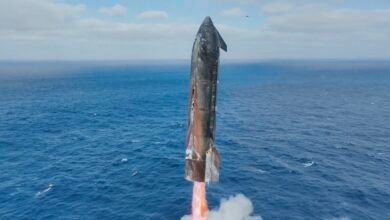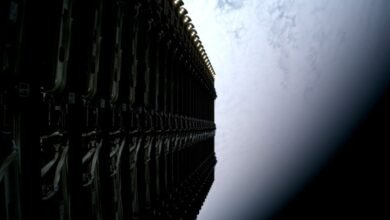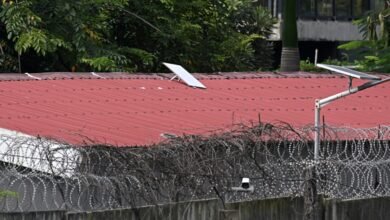U.S. Fears China Nearing Reusable Rocket Breakthrough

▼ Summary
– SpaceX achieved its 500th landing of a Falcon 9 first stage booster while launching Starlink satellites and expects its 500th re-flight of a first stage later this year.
– Several US companies and Chinese rocket builders are competing to become the second entity to successfully land and reuse a first stage booster.
– SpaceX’s significant lead in reusable rocket technology is expected to last many years, giving the US a key advantage over China in space competition.
– US Space Force officials expressed concern that China could accelerate its space capabilities once it masters reusable launch technology.
– China currently uses many different, non-reusable rocket types, requiring more resources to sustain a launch rate significantly lower than that of the United States.
The United States maintains a significant edge in space launch capability, largely due to the proven reusability of SpaceX’s Falcon 9 rocket. This technological advantage allows for a higher launch tempo and reduced costs, a critical factor in the strategic competition with China. While Chinese companies are aggressively pursuing their own reusable launch systems, American officials acknowledge that closing this gap remains a primary objective for their rivals.
SpaceX recently celebrated its 500th successful landing of a Falcon 9 first stage, a routine milestone on a mission to deploy Starlink satellites. The company is also approaching another landmark: the 500th re-flight of a previously used booster, expected later this year. This relentless pace underscores the maturity of their reusable rocket technology. A small group of other US firms, such as Blue Origin, Rocket Lab, Relativity Space, and Stoke Space, are also developing systems to replicate or even advance this capability.
However, experts suggest it could take a decade or more for any entity, including Chinese competitors, to approach the flight frequency and reliability SpaceX has achieved. This dominance in reusable rocketry is viewed as a pivotal US advantage as geopolitical rivalries expand into the space domain. Officials from the US Space Force have expressed concern over the rapid progress of China’s space program.
Brig. Gen. Brian Sidari, the Space Force’s deputy chief for intelligence, highlighted the strategic implications. He noted apprehension about the timeframe in which China might master reusable launch technology, which would enable them to deploy assets into orbit much more rapidly than they can today. The current disparity is stark.
China’s approach relies on a diverse fleet of expendable rockets. This year alone, they have utilized 14 different rocket types across 56 orbital missions, with the most-flown vehicle launching just 11 times. In contrast, only eight US rocket types have flown, but they have done so 142 times, with the Falcon 9 responsible for 120 of those launches. Without a reusable rocket, China must sustain a larger and more complex industrial base to support a launch rate that is still only a fraction of America’s. This logistical burden highlights the profound efficiency that reusability brings to space operations.
(Source: Ars Technica)





